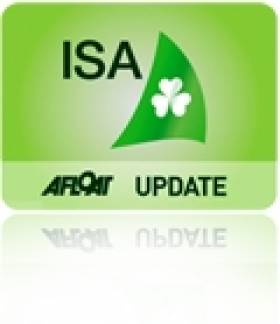Displaying items by tag: ISA
Keelboat racing accounts for about two thirds of active racing sailors, a thriving junior single-hander dinghy ‘pathway’ scene is the envy of all other fleets and it makes up 31% of all dinghy sailors (51% of dinghies), according to a new Irish Sailing Association (ISA) club racing survey published recently. A pdf of the full report is downloadable below.
The first snapshot of Irish club racing reveals little new of the 'segmented' national racing fleet, but provides a welcome and robust basis for the ISA, clubs, classes and sailors alike, on which to build and evolve.
According to the report, there is a total of just under 7,000 sailors actively racing in Ireland. Junior single-handers get four times the coaching of everyone else. Senior dinghy sailing is almost non existent in the major sailing centres. One fifth of clubs have no club racing and 25% have no interest in hosting visiting events. These are just some of the conclusions of a report where, the ISA say, the detail of input from some of the clubs was 'varied'.
As sailing clubs and classes found out in 2013, the ISA, charged with developing the sport, had little idea about what type of boats clubs had or what sort of activities they got up to. Fast forward three years and this situation has changed with the publication of this worthwhile fact finding exercise revealing what is really going on.
Part of the reason behind the survey was to deal with ongoing concern that nominated dinghy classes form an elitist High Performance (HP) pathway that 'exclude' strong sailors in other fleets.
The survey, commissioned by International Race Officer Jack Roy, an ISA Director, was sent out in March 2015 with data to be based on the 2014 season. The survey was emailed to the Commodores and Sailing Secretaries of the 57 affiliated clubs that have sailing activity. A total of 52 responses were received, a response rate of over 90%.
Recently appointed ISA director Sarah Byrne, an RS sailor, says the report gives a picture of the 'segmented' Irish fleet and the current overall situation is 'unfortunate' and 'does not serve competition well, without the critical mass to sustain so many classes on active circuits'.
The report is far from perfect but as a first cut at what boats are actually sailed in Ireland and where and roughly how many people are actively sailing it represents an important piece of work. There are acknowledged gaps in the information such as:
a. Northern Ireland – this information was pursued through the RYANI albeit in October/November, but has not been received to date. The ISA say they will pursue a more complete picture of all-Ireland sailing in the future.
b. Non-affiliated Clubs and independent groups of sailors are also excluded (eg GP14s in Youghal)
c. Those that do not participate in club racing but just event.
The survey reveals some other interesting facts too, such as how many clubs don't have racing at all and those clubs not interested in organising events.
The report is therefore a valuable and deserving of wide distribution and plenty of discussion.
The survey shows that 20% of clubs have no club racing and 25% no interest in hosting visitors. Deciding on how to deal with this scenario is the next step, should they be left to their own devices or does the ISA need to visit them and explain how club racing and event running pulls clubs together and keeps people involved and showcases them to possible new members and is important for their continued viability?
Also among the findings it is reported that in the major sailing centres approximately 60% of juniors are trained in single handers and 60% of senior dinghy sailors are single handers.
There is localised depth and strength of some one-design classes where there is a strong social scene and good class association (eg 1720, Waterwags and Shannon OD).
Single–hander v Double–hander
Senior dinghy sailing is almost non–existent in the major centres but relatively good outside of them. In the main sailing centres, keelboat racing prevails. Where the ISA is strongest and 'Development Squads' exist, single handers predominate and club racing flounders, in other areas the scene does exist.
Greystones dinghy sailor, Norman Lee, a long time advocate of the need to reformat current ISA thinking, has read the report and points to a need to change the training emphasis from juniors in single handers to double handers. Lee suggests where possible using double–handers also used by seniors to aid integration and transition.
Appendix 4 in the report is drawn from the classes forum of 14/11/15 and it notes the 'upside down' nature of training and coaching for sailing in Ireland; the junior pathway being heavily weighted towards single–handed sailing where very little or no club racing is done in single handers. Club racing virtually all done in double or multi handers.
Lee estimates this 4:1 coaching ratio is backwards and needs to be reversed more in favour of double handed sailors. 'If the sport is serious about bringing on the sort of sailors we need in club racing this needs to be predominantly done in multi handed dinghies and keelboats'.
'This seems blindingly obvious to me and I feel it needs to be brought to the attention of everyone interested in growing club participation' he says.
The data also illustrates that participation rates are higher where there is a one design or club pathway policy.
Sarah Byrne of the ISA says: The single-hander youth training bias and the ‘elitist’ high performance pathway, against a background of ‘adult’ double-hander preference, are held up by some as agents of death for sailing. However there is nothing extraordinary in the attrition rate from sailing when compared to other sports, whether in Ireland or abroad. We certainly punch way above our weight in terms of international performance and it is clear Annalise Murphy has been an inspiration to our junior females and no doubt, despite a very small active Irish class, recent 420 Youth Worlds success, HYC Doug and Colin too, have and will continue to, enthuse their peer group in turn.
Molly Coddled Youths?
But getting youths to transition from 'molly-coddled' junior and youth classes (coaches, rib support, ISA squads, foreign racing/coaching trips) to the independent world of racing a GP14, Fireball, RS 200 or whatever, is perhaps like asking Johnny Sexton to politely give it all up and turn out for his local Rugby Club on a Saturday afternoon, where the only perk would be the slice of orange at half time!
If we are all to 'sail double handers and have fun'. What more can be done to achieve this? Where's the incentive?
Byrne says 'the exceptional aspect of sailing in that you can remain at the top of your game well into and beyond middle age and often compete in multi-generational fleets. What’s not to love?'
But, how realistic is a €400 a year coaching grant for a senior class to do anything (roughly €20 euro a boat at a 20–boat coaching weekend)?
Combined events?
In the report, combining events to get numbers up to a viable level also comes in for mention but the perceived wisdom of combining fleets for events – a nostalgic throwback to IYA Dinghy week perhaps – plus clubs whingeing about low profits from events, depresses turnouts in total over a season because it takes the pressure off individual classes to do the ring–a–round, get boats onto trailers and car roofs and get people to the events. More needs to be done to empower classes to do this for themselves.
Classes are Mini Cults
A class is like a mini cult, driven by passionate aficionados. Once you mix brands, dilute the passion, well then the next stop is PY. That’s been the experience in the UK from trying to combine Laser 2s, ISOs, Hornets and Albacores for example where ultimately racing is compromised.
Instead supply side bottle necks have to be tackled or at least the status quo challenged aggressively.
The big bottleneck is youths not transitioning because of 1. Burnout and 2. The adult racing scene is seen as 'boring', 'unglamorous' and 'unsupported' (eg no RIB or coach support).
The status quo challenge is for the ISA to take a macro rather than a micro approach to the scene.
For example is it time to stand up to parents, clubs, private coaches and say "Actually, little Johnny is not good enough and should not be anywhere near an ISA HP squad"! This will ruffle feathers in certain quarters and there will also be the short term sacrifice of a good chunk of the €94k annual squad fees generated, almost as much as the cash from its Olympic sailing sponsor.
The ISA also needs to reduce its footprint on domestic junior/youth race coaching and this way it will help tear down barriers of pathways, squads and general all round exclusivity in this tiny sport.
The big numbers in College team racing (Trinity College Dublin have seven teams of 6 plus 10 subs while in the 1980s it was hard to get a second team) show if sailing is fun and sensibly competitive even the burnt out re-engage in some way, but these guys won't go back to one design fleet racing the way things are and given their traumatic experience of over training and trying to get on Irish teams.
The status quo must be questioned in order for things to develop more organically based on the two simple ideas that 1. many kids like going on the water and 2. many kids are competitive and will eventually fancy bit of a race around the cans and let's see where it takes them.
In fairness, the's ISA strategy to 2020 document touched on these issues but there have yet to be any macro moves to change the supply and type of sailors coming through.
The tiny supply from youths is a shame because older age groups (i.e. over 40) are potentially staying longer and that's a positive supply variable.
Globally people are beginning to realise youth sailing needs to change. You only have to check out Volvo Ocean Race winner Ian Walker's recent quotes about overtraining of youths to discover the world wide issue.
In the coming weeks, the ISA promise that input from current and former junior sailors will be sought to establish the underlying reasons for erosion and lack of transition into adult fleets. The ISA say it is looking to exploit all avenues to encourage youth ‘self-motivation’ to harness some of those leaving the sport, while also looking to attract old-hands and novices into the fold. It is hoped that this, with other initiatives, will further inform guiding principles and policy. Some clubs across the country are successfully investing time and funds in their youth sailors, introducing new experiences beyond training to expand the appeal and accessibility of sailing and sustain interest and participation through the ‘age of attrition’.
Only 17 of the 40 classes took up an invitation to attend last year's ISA class forum. Some clubs have commented that this exercise has already prompted discussion among their ranks. If a properly promoted and attended forum in 2016 could address the issues set out in this report, some worthwhile conclusions could be drawn and a plan made.
As always, Afloat.ie is seeking YOUR views in the comment box below.
A New Direction for the Irish Sailing Association in 2016
ISA President, David Lovegrove on the year past, and his plans for 2016
2015 began with huge momentum for change in the ISA. The re-evaluation of the organisation's strategic vision, which was led by Neil Murphy, culminated in an extensive national consultative process which was finalised with the approval of the ISA Strategic Plan 2015-2020 at the AGM in March. The ISA now has a blueprint to guide the organisation through the acknowledged serious challenges confronting sailing and boating in Ireland.
2015 saw a number of stalwart and energetic Board members resign at the end of their term; Mike O’Connor, Muriel Rumball and Phillip Cowman. It is important to record our appreciation of the immensely effective effort all these directors made over several years. We have been fortunate to attract new blood of the same high calibre such as Robert Dix, Paddy McGlade and Sarah Byrne. Each brings a wealth of unique specialist experience.
The year started with our inaugural annual awards scheme, jointly held with Afloat, when unsurprisingly, Anthony O'Leary won the Sailor of the Year Award, and Royal Cork Yacht Club deservedly took the 2014 Mitsubishi sponsored accolade for Club of the Year. Youth Sailor of the Year was earned by the National Yacht Club’s Finn Lynch who had a stunningly successful season and finally, Mayo Sailing Club took the Training Centre of the Year award.
Early summer saw the launch of Try Sailing, an initiative devised by Board Directors Muriel Rumball and Pierce Purcell. The plan was to attract at least 3,000 newbies to get out on the water in Clubs and Training Centres all around the country. It was an outstanding success and there are high expectations of the plans to significantly extend the reach of Try Sailing in 2016.
2015, aided by great breezes, witnessed many successful National and International events in Ireland, including the ICRA Nationals, superbly hosted in Kinsale; the Volvo Dun Laoghaire Regatta, with over 400 boats on the water and 1,000s ashore enjoying the atmosphere and the craic. Dinghyfest, was, as always, expertly managed by the Royal Cork Yacht Club in mid-August. On the international front, there were some outstanding achievements, such as Shane McCarthy and Andy Thompson winning the highly competitive British GP14 championships in July and in the Fastnet in August, which proved once again, that Ireland can punch above its weight internationally with a number of great results in very difficult conditions.
At the risk of inadvertently omitting other worthy racing achievements, it would be remiss not to mention Justin Slattery’s win on Abu Dhabi in the Volvo round the world race and Dave Cullen’s great result in winning the Half Ton Classic Cup with Checkmate XV.
We cannot look forward to 2016 without mentioning our Olympic Athletes who are all presently travelling the world to participate in the toughest competitions to prepare for Rio 2016. We wish them well and confidently expect them to fly the Irish Flag in Rio with pride and hopefully some success.
2015 was a year when a lot of back–room energy was expended on preparing fresh initiatives which are planned to reinvigorate sailing activity, particularly amongst young adults. Presently, a consultative process will shortly be underway to brief all clubs and training centres on these changes. In 2016, Brian Craig hopes to announce the establishment of a National Coaching Programme which will be accessible to every sailor of whatever skill level or interest.
Changes to the small boat sailing scheme have been made to encourage a lifelong love of the sport with less emphasis on the acquisition of “certificates”.
The ISA continues to lobby Government on a range of issues, such as the urgent need for a replacement to the Small Craft Register, rationalisation of the system for granting foreshore licenses, etc. The list is endless!
I trust you are already making your sailing plans for next year and I wish you all safe and enjoyable times on the water in 2016.
David Lovegrove
Irish Sailing Association 2016 Calendar of Fixtures
| Start | End | Name | Boat Class | Venue |
|---|---|---|---|---|
| 06/02/16 | 07/02/16 | IUSA Westerns | Fireflies | Killaloe SC |
| 25/02/16 | 28/02/16 | IUSA Varsities | Fireflies | Kenmare |
| 26/03/16 | 27/03/16 | Munster Championships | Laser | Baltimore Sailing Club |
| 10/04/16 | 10/04/16 | Traveller 1 | Topper | East Down YC |
| 23/04/16 | 24/04/16 | Mirror Westerns | Mirror | Sligo YC |
| 23/04/16 | 24/04/16 | Ulster Championships | Laser | Coounty Antrim Yacht Club |
| 23/04/16 | 24/04/16 | RS400 Easterns | RS | Royal St George YC |
| 23/04/16 | 24/04/16 | RS200 Easterns | RS | Royal St George YC |
| 24/04/16 | 24/04/16 | Traveller 2 | Topper | Lough Derg YC |
| 08/05/16 | 08/05/16 | Traveller 3 | Topper | Wexford Harbour B&TC |
| 14/05/16 | 16/05/16 | Leinster Optimist Championships | Optimist | Royal St George YC |
| 14/05/16 | 15/05/16 | Optimist Leinsters | Optimist | Royal St George YC |
| 21/05/16 | 22/05/16 | Ulster Championships | Topper | Donaghadee SC |
| 21/05/16 | 22/05/16 | GP14 OT & Purcell | GP14 | Swords Sailing & BC |
| 21/05/16 | 22/05/16 | J/24 Northerrns | J/24 | Sligo YC |
| 21/05/16 | 22/05/16 | RS400 Northerns | RS | Cushendall Sailing & Boating Club |
| 27/05/16 | 29/05/16 | Sportsboat Cup 2016 | Various | Howth YC |
| 27/05/16 | 29/05/16 | Dragon East Coast Championship | Dragon | Royal Irish YC |
| 28/05/16 | 29/05/16 | Squib Northern Championship | Squib | Killyleagh SC |
| 04/06/16 | 04/06/16 | Lambay Races 2016 | All Classes | Howth YC |
| 10/06/16 | 12/06/16 | ICRA National Championships 2016 | Cruisers | Howth YC |
| 10/06/16 | 12/06/16 | Wayfarer National Championship | Wayfarer | Ramor Watersports Club |
| 11/06/16 | 12/06/16 | Optimist Connaughts | Optimist | Foynes YC |
| 18/06/16 | Volvo Round Ireland Yacht Race | Cruisers | Wicklow SC | |
| 18/06/16 | 18/06/16 | Royal Alfred Bloomsday Regatta | All Classes | National YC |
| 18/06/16 | 19/06/16 | Leinster Championships | Topper | Skerries SC |
| 25/06/16 | 26/06/16 | GP14 Ulsters | GP14 | East Down YC |
| 25/06/16 | 26/06/16 | RS400 Westerns | RS | Sligo YC |
| 25/06/16 | 26/06/16 | RS200 Westerns | RS | Sligo YC |
| 01/07/16 | 01/07/16 | Optimist VP Team Racing Cup | Optimist | Malahide YC |
| 01/07/16 | 03/07/16 | White Sails and Non Spinnaker Team Challenge | Cruisers | Royal St George YC |
| 01/07/16 | 03/07/16 | Dingy West 2016 - Sailing the Wild Atlantic | All Dinghies | Galway Bay Sailing Club |
| 02/07/16 | 03/07/16 | Connaught Championships | Laser | Lough Derg YC |
| 02/07/16 | 03/07/16 | Optimist Ulsters | Optimist | Malahide YC |
| 02/07/16 | 03/07/16 | J/24 Southerns | J/24 | Royal Cork YC |
| 02/07/16 | 03/07/16 | Fireball Leinsters | Fireball | Wexford Harbour B&TC |
| 02/07/16 | 04/07/16 | Irish Nationals | Topper | Royal Cork YC |
| 10/07/16 | 15/07/16 | Volvo Cork Week & IRC European Championships | Various | Royal Cork YC |
| 15/07/16 | 17/07/16 | Ruffian 23 National Championship | Ruffian 23 | Dun Laoghaire MYC |
| 16/07/16 | 17/07/16 | Optimist Crosbie Cup | Optimist | Lough Ree YC |
| 16/07/16 | 17/07/16 | Leinster Championships | Laser | National YC |
| 17/07/16 | 17/07/16 | Traveller 4 | Topper | Carrickfergus SC |
| 22/07/16 | 24/07/16 | Mirror National Championships | Mirror | Sutton Dinghy Club |
| 23/07/16 | 30/07/16 | Laser Radial World Championships (Men's & Youth's) | Laser | Royal St George YC |
| 23/07/16 | 24/07/16 | GP14 Leinsters | GP14 | Sutton Dinghy Club |
| 23/07/16 | 24/07/16 | RS400 Southerns | RS | Lough Ree YC |
| 23/07/16 | 24/07/16 | RS200 Southerns | RS | Lough Ree YC |
| 23/07/16 | 29/07/16 | World Championships | Topper | Ballyholme YC |
| 27/07/16 | 30/07/16 | WIORA 2016 | Cruisers | Royal Western YC |
| 30/07/16 | 01/08/16 | Arklow Maritime Festival | All Classes | Arklow SC |
| 06/08/16 | 07/08/16 | J/24 Westerns | J/24 | Lough Ree YC |
| 07/08/16 | 07/08/16 | Sutton Dinghy Regatta | All Classes | Sutton Dinghy Club |
| 07/08/16 | 12/08/16 | Mirror Europeans 2016 | Mirror | Royal Cork YC |
| 09/08/16 | 11/08/16 | 420 Nationals | 420 | Howth YC |
| 12/08/16 | 13/08/16 | Sailability President's Cup | Various | Kinsale YC |
| 12/08/16 | 14/08/16 | Fireball Nationals | Fireball | Howth YC |
| 15/08/16 | 19/08/16 | Optimist Irish Nationals | Optimist | Lough Derg YC |
| 19/08/16 | 21/08/16 | Squib Irish National Championship | Squib | Kinsale YC |
| 20/08/16 | 23/08/16 | National Championships | Laser | Galway Bay Sailing Club |
| 26/08/16 | 28/08/16 | RS400 Irish Nationals | RS | Schull Harbour SC |
| 26/08/16 | 28/08/16 | RS400 Irish Nationals | RS | Schull Harbour SC |
| 27/08/16 | 29/08/16 | GP14 Irish & Masters | GP14 | Skerries SC |
| 27/08/16 | 28/08/16 | Munster Championships | Topper | Kinsale YC |
| 27/08/16 | 28/08/16 | Mirror Northerns | Mirror | Royal North Of Ireland YC |
| 27/08/16 | 28/08/16 | Topper Munster Championship | Topper | Kinsale YC |
| 28/08/16 | 28/08/16 | Taste of Greystones Cruiser Regatta | Cruisers | Greystones SC |
| 31/08/16 | 04/09/16 | Dragon Irish Championship | Dragon | Kinsale YC |
| 02/09/16 | 04/09/16 | J/24 Nationals | J/24 | Royal St George YC |
| 03/09/16 | 04/09/16 | Wayfarer Inland Championship | Wayfarer | Callaun SC |
| 10/09/16 | 11/09/16 | Optimist Munsters | Optimist | Royal Cork YC |
| 10/09/16 | 11/09/16 | Fireball Munsters | Fireball | Killaloe SC |
| 11/09/16 | 11/09/16 | Traveller 5 | Topper | Killyleagh SC |
| 17/09/16 | 18/09/16 | All Ireland Inter-Schools Championship | All Classes | Sutton Dinghy Club |
| 24/09/16 | 25/09/16 | GP14 Autumn & Youth | GP14 | Sligo YC |
| 24/09/16 | 25/09/16 | ISA All Ireland Youth Championships | TBC | TBC |
| 01/10/16 | 02/10/16 | ISA All Ireland Senior Championships | J80 | TBC |
| 15/10/16 | 16/10/16 | Squib Inland Championship/Freshwater Regatta | Squib | Lough Derg YC |
ISA Announces Regional Laser Squads
#YouthSailing - ISA Performance has announced its regional Laser squads for the new season.
The Leinster Laser Radial team will comprise Sally Bell, Tara Coveney, Loghlen Rickard, Aaron Rogers, Nell Staunton, Rory and Jenny Fekkes, Patrick Coyle and Rob Salters.
The same province's Laser 4.7 squad includes Hugh Perrette, Peter Fagan, Henry Higgins, Heather Spain, Evie Byrne, Ros Morgan, Greg Arrowsmith and Eoghan Byrne.
Munster's Laser Radials will be sailed by Johnny Durcan, Ronan Walsh, Charlie Moloney, Richard McGinley, Luke McGrath, Jamie Tingle, Billy Duane, Jack Carroll and Eoghan O'Regan.
And Brian Fox, Rebecca O'Shaughnessy, Paddy Cunnane, Chris Bateman, Tom Keal, Cian Jones, Caoimhe Foster and Molly Murphy will make up the Munster 4.7 contingent.
In other ISA youth sailing news, its Optimist squad for 2015-2016 has also recently been announced, while applications for the Topper squad are now open.
This weekend’s two-day All-Ireland Sailing Championship at the National Yacht Club in Dun Laoghaire, racing boats of the ISA J/80 SailFleet flotilla, is an easy target for facile criticism. Perhaps because it tries to do so much in the space of only two days racing, with just one type of boat and an entry of 15 class championship-winning helms, inevitably this means it will be seen by some as falling short of its high aspiration of providing a true Champion of Champions.
Yet it seldom fails to produce an absolute cracker of a final. Last year, current defending champion Anthony O’Leary of Cork, racing the J/80s in Howth and representing both ICRA Class 0 and the 1720 Sportsboats, snatched a last gasp win from 2013 title-holder Ben Duncan of the SB20s, thereby rounding out an utterly exceptional personal season for O’Leary which saw him go on to be very deservedly declared the Afloat.ie “Sailor of the Year” 2014.
So this year, with a host of younger challengers drawn from a remarkable variety of sailing backgrounds, the ever-youthful Anthony O’Leary might well see himself in the position of the Senior Stag defending his territory against half a dozen young bucks who will seem to attack him from several directions. And with winds forecast to increase in strength as the weekend progresses, differing talents and varying levels of athletic ability will hope to experience their preferred conditions at some stage, thereby getting that extra bit of confidence to bring success within their reach. It’s a fascinating scenario, and W M Nixon tries to set this unique event in perspective.
When the founding fathers of modern dinghy racing in Ireland set up the Irish Dinghy Racing Association (now the ISA) in 1946, they would have been reasonably confident that the immediate success of their new pillar event, the Helmsman’s Championship of Ireland, gave hope that a contest of this stature would still be healthily in being, and still run on a keenly-followed annual basis, nearly seventy years later.
They might even have been able to envisage that it would have been re-named the All-Ireland Championship, even if their original title of Helmsman’s Championship had a totally unique and clearly recognisable quality, for they’d have accepted its fairly harmless gender bias was going to create increasing friction with the Politically Correct brigade.
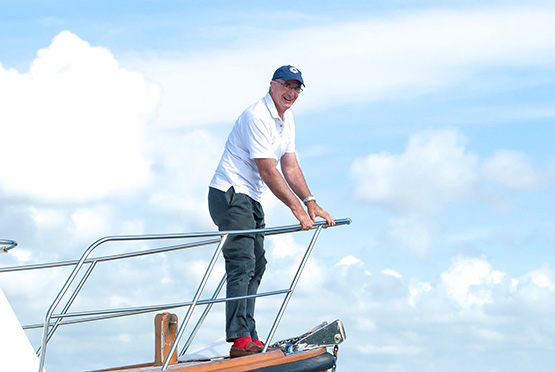 The Stag at Bay? Anthony O’leary sniffs the breeze last weekend, in charge of racing in the CH Marine Autumn league. This weekend he defends his All-Ireland title in Dun Laoghaire. Photo: Robert Bateman
The Stag at Bay? Anthony O’leary sniffs the breeze last weekend, in charge of racing in the CH Marine Autumn league. This weekend he defends his All-Ireland title in Dun Laoghaire. Photo: Robert Bateman
 Sailing should be fun, and run with courtesy – invitation to enjoyable racing, as displayed last weekend in Cork on Anthony O’Leary’s Committee Boat. Photo: Robert Bateman
Sailing should be fun, and run with courtesy – invitation to enjoyable racing, as displayed last weekend in Cork on Anthony O’Leary’s Committee Boat. Photo: Robert Bateman
But what those pioneering performance dinghy racers in 1946 can scarcely have imagined was that, 69 years later, no less than a quarter of the coveted places in the All-Ireland Championship lineup of 16 sailing stars would be going to helms who have qualified through winning their classes within the Annual National Championship of a thirteen-year-old all-Ireland body known as the Irish Cruiser-Racing Association.
And if you then further informed those great men and women of 1946 that those titles were all won in an absolute humdinger of a four-day big-fleet national championship staged in the thriving sailing centre and Irish gourmet capital of Kinsale, they’d have doubted your sanity. For in the late 1940s, Kinsale had slipped almost totally under the national sailing radar, while the town generally was showing such signs of terminal decline that there was little enough in the way of resources to put any food on any table, let alone think in terms of destination restaurants.
So in tracing the history of this uniquely Irish championship (for it long pre-dates the Endeavour Trophy in England), we have a convenient structure to hold together a manageable narrative of the story of Irish sailboat racing since the end of World War II. Add in the listings of the Irish Cruising Club trophies since the first one was instituted in 1931, then cross-reference this info with such records as the winners of the Round Ireland race and the Dun Laoghaire to Dingle Race, beef it all up with the winners of the national championship of the largest dinghy and inshore keelboat classes, and a comprehensible narrative of our national sailing history emerges.
 The veteran X332 Equinox (Ross McDonald) continues to be a force in Irish cruiser-racing, and by winning her class in the ICRA Nationals in Kinsale at the end of June, Equinox is represented in the All Irelands this weekend by helmsman Simon Rattigan. Photo: W M Nixon
The veteran X332 Equinox (Ross McDonald) continues to be a force in Irish cruiser-racing, and by winning her class in the ICRA Nationals in Kinsale at the end of June, Equinox is represented in the All Irelands this weekend by helmsman Simon Rattigan. Photo: W M Nixon
It’s far from perfect, but it’s a defining picture nevertheless, even if it lacks the inside story of the clubs. Be that as it may, in looking at it properly, we get a greater realization that the All-Ireland Helmsman’s Championship (or whatever you’re having yourself) is something very important, something to be cherished and nurtured from year to year.
Of course I’m not suggesting that we should all be out in Dublin Bay today and tomorrow on spectator boats, avidly watching every twist and turn as eight identical boats race their hearts out with a variety of helms calling the shots. Unless you’re in a particular helmsperson’s fan club, it’s really rather boring to watch from end to end, or at least until the conclusion of each stage and then the final races.
This is very much a sport for the “edited highlights”. The reality is that no matter how they try to jazz it up, sailing is primarily of interest only to those actively taking part, or directly engaged in staging each event. When great efforts are made to make it exciting for casual spectators, it costs several mints and results in rich people and highly-resourced teams engaged in costly and often unseemly battles to which genuine sporting sailors cannot really relate at all.
But with its exclusion of Olympic and some High Performance squad members, the All-Ireland in its current form is the quintessence of Irish local and national sailing. It’s almost compulsive for its participants, it provides an extra interest for their supportive clubmates, and in its pleasantly low key way it’s a genuine expression of real Irish sailing, the sailing of L’Irlande profonde.
So of course we agree that it might be more interesting for the bright young people if it was raced in something more trendy like the RS400s if they could find sufficient owners to risk their boats in this particular bear pit. And yes indeed, the ISA Discussion Paper and Helmsmans Guidelines of 2012 did indeed hope that within three years, the All Ireland would be staged in dinghies.
But we have to live in the real world. Sailing really is a sport for life, and some of our best sailors are truly seniors who would be disadvantaged if it was raced in a boat making too many demands on sheer athleticism, for which the unattainable Olympic Finn would be the only true answer.
But in any case, if you watch J/80s racing in a breeze, there’s no doubting the advantage a bit of athletic ability confers, yet the cunning seniors can overcome their lack of suppleness and agility with sheer sailing genius.
 While they may be keelboats, in a breeze the J/80s will sail better with some athleticism, as displayed here by Ben Duncan (second left) as he sweeps toward the finish and victory in the 2013 All Irelands at Howth. Photo: Aidan Tarbett
While they may be keelboats, in a breeze the J/80s will sail better with some athleticism, as displayed here by Ben Duncan (second left) as he sweeps toward the finish and victory in the 2013 All Irelands at Howth. Photo: Aidan Tarbett
 Yet a spot of sailing genius can offset the adverse effects of advancing years – Anthony O’Leary (right) with Dylan Gannon (left) and Dan O’Grady after snatching victory at the last minute in 2014. Photo: Jonathan Wormald.
Yet a spot of sailing genius can offset the adverse effects of advancing years – Anthony O’Leary (right) with Dylan Gannon (left) and Dan O’Grady after snatching victory at the last minute in 2014. Photo: Jonathan Wormald.
But another reality we have to accept is that Ireland is only just crawling out of the Great Recession. And in that recession, it was the enduring competitiveness of ageing cruiser-racers and the sporting attitude of their owners which kept the national sailing show on the road. Your dyed-in-the-wool dinghy sailor may sneer at the constrictions of seaborn truck-racing. But young sailors who were realists very quickly grasped that if they wanted to get regular sailing with good competition as the Irish economy went into free fall, then they had to hone their skills in making boats with lids, crewed by tough old birds most emphatically not in the first flush of youth, sail very well indeed.
Thus in providing a way for impecunious young people to keep sailing through the recession, ICRA performs a great service for Irish sailing. And the productive interaction between young and old in the ICRA fleets, further enlivened by their different sailing backgrounds, has resulted in a vibrant new type of sailing community where it is regarded as healthily normal to be able to move between dinghies and keelboats and back again.
The final lineup of entries is a remarkable overview of the current Irish racing scene, and if you wonder why the winner of the GP14 British Opens 2015, Shane McCarthy of Greystones, is not representing the GP 14s, the word is he’s unavailable, so his place is taken by Niall Henry of Sligo.
2014 Champion Anthony O'Leary, RCYC
RS400 Alex Barry, Monkstown Bay SC
GP14 Niall Henry ,Sligo Yacht Club
Shannon OD Frank Browne, Lough Ree YC
Flying Fifteen David Gorman, National YC
Squib Fergus O'Kelly, Howth YC
ICRA 1 Roy Darrer, Waterford Sailing Club
Mermaid Patrick, Dillon Rush SC
Laser Std Ronan Cull, Howth YC
SB20 Michael O'Connor, Royal St.George YC
IDRA14 Alan Henry, Sutton DC
RS200 Frank O'Rourke, Greystones SC
ICRA 2 Simon Rattigan, Howth YC
ICRA 4 Cillian Dickson, Howth YC
Ruffian Chris Helme, Royal St.George YC
As a three-person boat with a semi-sportsboat performance, the J/80 is a reasonable compromise between dinghies and keelboats, and the class has the reputation of being fun to sail, which is exactly what’s needed here.
The Sailing Olympics and the ISAF Worlds may be terribly important events for sailing in the international context, but nobody would claim they’re fun events. Equally, though, you wouldn’t dream of suggesting the All-Ireland is no more than a fun event. But it strikes that neat balance between tough sport and sailing enjoyment to make it quite a good expression of the true Irish amateur sailing scene.
Inevitably from time to time it produces a champion whose sailing abilities are so exceptional that it would amount to a betrayal of their personal potential for them not to go professional in some way or other. But fortunately sailing is such a diverse world that two of the outstanding winners of the Helmsman’s Championships of Ireland have managed to make their fulfilled careers as top level professional sailors without losing that magic sense of fun and enjoyment, even though in both cases it has involved leaving Ireland.
Their wins were gained in the classic early Irish Yachting Association scenario of a one design class which functioned on a local basis being able to provide enough reasonably-matched boats to be used for the Helmsman’s, and the three I best remember were when Gordon Maguire won in 1982 on Lough Derg racing Shannon One Designs, then in the 1970s Harold Cudmore won on Lough Neagh racing Flying Fifteens, and in 1970 itself, a very young Robert Dix was winner racing National 18s at Crosshaven.
Gordon Maguire was the classic case of a talented sailor having to get out of Ireland to fulfill himself. His win in 1982 in breezy conditions at Dromineer in Shannon One Designs, with Dave Cummins of Sutton on the mainsheet, was sport at its best, though I doubt that some of the old SODs were ever the better again after the hard driving they received.
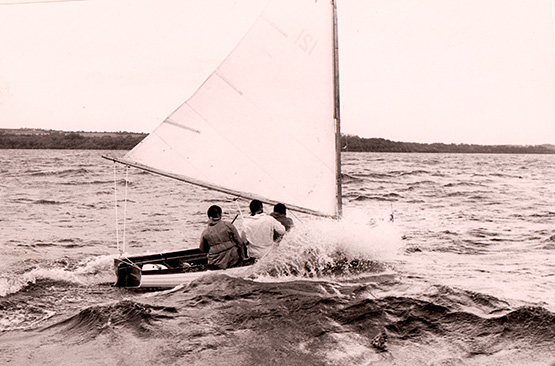 Driving force. Gordon Maguire going indecently fast for a Shannon One Design, on his way to winning the Helmsmans Championship of Ireland at Dromineer in 1982. Photo: W M Nixon
Driving force. Gordon Maguire going indecently fast for a Shannon One Design, on his way to winning the Helmsmans Championship of Ireland at Dromineer in 1982. Photo: W M Nixon
Then Gordon spread his wings, and won the Irish Windsurfer Nationals in 1984 - a great year for the Maguires, as his father Neville (himself a winner of the Helmsmans Championship five times) won the ISORA Championship with his Club Shamrock Demelza the same weekend.
But Gordon needed a larger canvas to demonstrate his talents, and in 1991 he was a member of the Irish Southern Cross team in Australia, a series which culminated in the Sydney-Hobart Race. The boat which Maguire was sailing was knocked out in a collision with another boat (it was the other boat’s fault), but Maguire found a new berth as lead helm on the boat Harold Cudmore was skippering for the Hobart Race, and they won that overall.
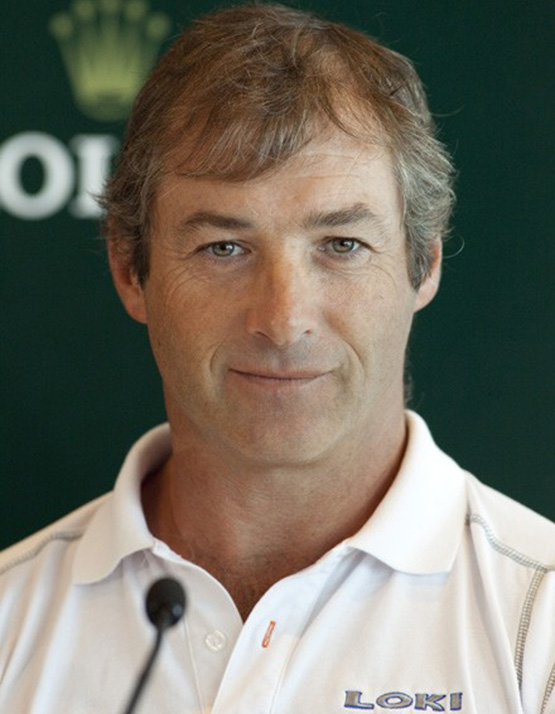 A man fulfilled, Gordon Maguire at the beginning of his hugely successful linkup with Stephen Ainsworth’s RP 63 Loki
A man fulfilled, Gordon Maguire at the beginning of his hugely successful linkup with Stephen Ainsworth’s RP 63 Loki
And Gordon Magure realized that for his talents, Australia was the place to be. More than twenty years later, he was to get his second Hobart Race overall win in command of Stephen Ainsworth’s RP 63 Loki, and here indeed was a man fulfilled, revelling in a chosen career which would have been unimaginable in Ireland.
Harold Cudmore had gone professional as best he could in 1974, but it was often a lonely and frustrating road in Europe. However, his win of the Half Ton Worlds in Trieste in the Ron Holland-designed, Killian Bushe-built Silver Shamrock in 1976 put his name up in lights, and he has been there ever since, renowned for his ability to make any boat perform to her best. It has been said of him when racing the 19 Metre Mariquita in the lightest conditions, that you could feel him getting an extra ounce of speed out of this big and demanding gaff-rigged classic seemingly by sheer silent will power.
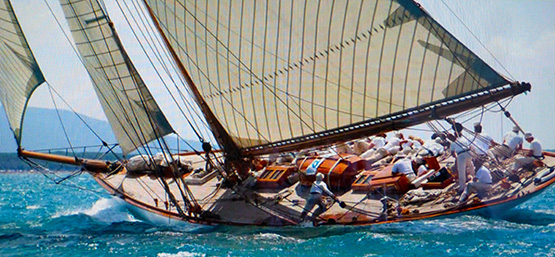
The restored 19 Metre Mariquita is a demanding beast to sail in any conditions…

...but in light airs, Harold Cudmore (standing centre) seems to be able to get her to outsail larger craft by sheer will-power.
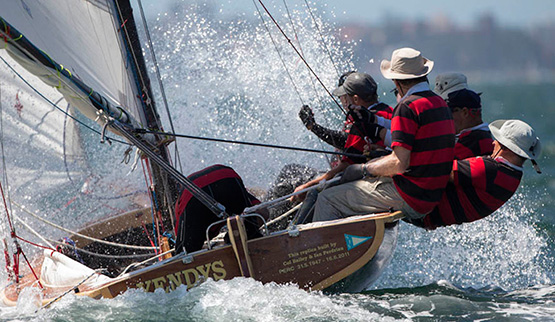 A different scene altogether, but still great sport – Harold Cudmore racing the classic Sydney Harbour 18-footer Yendys
A different scene altogether, but still great sport – Harold Cudmore racing the classic Sydney Harbour 18-footer Yendys
But as for Robert Dix’s fabulous win in 1970, while he went on to represent Ireland in the 1976 Olympics in Canada, he has remained a top amateur sailor who is also resolutely grounded in Irish business life (albeit at a rather stratospheric level). But then it could be argued that nothing could ever be better than winning the Helmsmans Championship of Ireland against the cream of Irish sailng when you’re just 17 years old, and doing it all at the mother club, the Royal Cork, as it celebrated its Quarter Millenium.
It was exactly 44 years ago, the weekend of October 3rd-4th 1970, and for Robert Dix it was a family thing, as his brother-in-law Richard Burrows was Number 2 in the three-man setup. They were on a roll, and how. The manner in which things were going their way was shown in an early race when they were in a tacking duel with Harold Cudmore. Coming to the weather mark, Cudmore crossed them on port, but the Dix team had read it to such perfection that by the time he had tacked, they’d shot through the gap with inches to spare and Cudmore couldn’t catch them thereafter.

Decisive moment in the 1970 Helmsman’s Championship. At the weather mark, Harold Cudmore on port is just able to cross Robert Dix on starboard………Photo W M Nixon
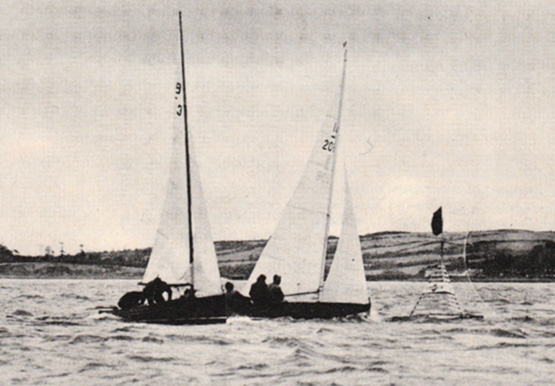 ……but Dix is able to shoot through the gap as Cudmore tacks…..Photo: W M Nixon
……but Dix is able to shoot through the gap as Cudmore tacks…..Photo: W M Nixon
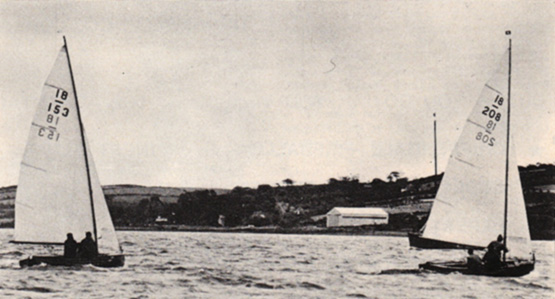 …..and is on his way to a win which will count well towards his overall victory over Cudmore by 0.4 points. Photo: W M Nixon
…..and is on his way to a win which will count well towards his overall victory over Cudmore by 0.4 points. Photo: W M Nixon
Admittedly both Harold Cudmore and the equally-renowned Somers Payne had gear problems, but even allowing for that, the 17-year-old Robert Dix from Malahide was the star of the show, and the final points of Robert Dix 9.5 and Harold Cudmore 9.9 for the 1970 Helmsman’s Championship of Ireland says it all, and it says it as clearly now as it did then.
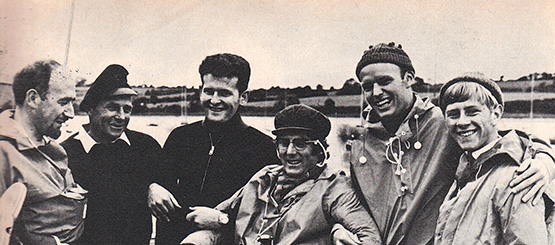
The six finalists in the 1970 Helmsman’s Championship were (left to right) Michael O’Rahilly Dun Laoghaire), Somers Payne (Cork), Harold Cudmore (Cork), Owen Delany (Dun Laoghaire), Maurice Butler (Ballyholme, champion 1969) and Robert Dix (Malahide), at 17 the youngest title holder ever. Photo: W M Nixon
McCann & Venner Crowned All Ireland Youth Sailing Champions
Only 3.5 points separated the top three sailors after the medal race of the of the junior All Ireland sailing championships off Kinsale this afternoon. Sailed in Topaz dinghies, Peter McCann of Royal Cork Yacht Club won the Championships with Optimist dinghy champion Peter Fagan of Skerries Sailing Club second. Defending champion Harry Durcan, also of Royal Cork Yacht Club, took bronze. Clare Gorman of the National Yacht Club, Dun Laoghaire was crowned Junior All Ireland Girls Champion. Full results downloadable below.
Youth stars: Nicola Ferguson, Clare Gorman, Peter McCann and Jamie Venner
ISA SafeTrx System Paused For Upgrade Tomorrow
#SafeTrx - Users of the ISA's SafeTrx app are advices that the system will be unavailable tomorrow morning and afternoon (Tuesday 15 September) for an upgrade.
During the planned upgrade from 6am to 3pm, the SafeTrx apps for iOS and Android, as well as the ISA SafeTrx Boater website, will be unavailable.
Following the upgrade, a new version of the app will be available to download for your smartphone, with older versions no longer functioning after tomorrow.
CoastalBoating.net details the changes boaters can expect from the updated SafeTrx app, including a new emergency call feature.
#sailing – Irish Sailing Association (ISA) President David Lovegrove on the summer ahead
The sun is finally showing its face on Irish waters, and just in time as the summer sailing season is now in full swing, with boats taking to the water in higher numbers than previous years. I am in regular contact with Clubs across the country and they speak of the positive mood coursing its way through their sailing communities.
Much of this of course has to do with the resurgence of the Irish economy following years of austerity, cutbacks, and a drop in sailing participation. The marine industry now reports that sales of boats coming into the country are on the up; handicap applications are increasing following a lull in requests, and this can only mean one thing – more boats on the water. The Irish Cruiser Racing Association (ICRA) Nationals, Sovereigns Week and Dun Laoghaire Week are all benefitting, with buoyant numbers reported as boats come out to compete in what should be a bumper summer season.
This summer will also see DinghyFest hit the shores of Crosshaven, Royal Cork Yacht Club (RCYC) creating a new event - could this herald the resurgence of Dinghy Week? I note the cooperation between the ISA and the dinghy classes, which I hope will lead to an upsurge in the numbers of dinghy sailors, which fits with our policy of growing this area within Irish sailing.
In other positive news, it was great to hear that the ISA has won the National Inclusion Award under the category of National Governing Body of Sport for the commitment and focus displayed in respect to providing sport and physical activity opportunities for people with disabilities.
I am also pleased to announce that SafeTrx, the ISA app that monitors your boat journeys and alerts Emergency Contacts should you fail to return on time, has been shortlisted for the Maritime Industry Awards in the categories of Innovation in Maritime Safety and Innovation in Marine Technology.
On 18 June, the Minister for Agriculture, Food and the Marine, Simon Coveney launched Try Sailing on board the Jeanie Johnston in Dublin. Try Sailing is a national initiative, designed to drive participation in sailing locally through open days and events at centres and clubs across the country. For more information, visit www.trysailing.ie
Spring saw the ISA AGM adopt the Strategic Plan 2015-2020 – the blueprint for the future of sailing in Ireland. This plan is now being implemented across the key areas within sailing. The AGM elected two new officers to the Board, and said goodbye to Mike O'Connor and Phillip Cowman, who both retired after seven years on the ISA Board. I would like to thank them for their service and welcome to the Board Robert Dix, former ISA President and Chairman of the Government Taskforce on Harnessing our Ocean Wealth; and Paddy McGlade, ex-RCYC Admiral and member of the Irish Cruising Club and Cruising Association of Ireland.
On the Performance side of the house, Providence Team IRL has been competing on a number of fronts, notably at the World Cup series and significant international-class regattas, such as the Delta Lloyd, where Annalise Murphy in the Laser Radial claimed a Silver medal in trying conditions amidst a fleet of top sailors, including Olympic Silver and Bronze medallists. I was also delighted to see 16–year–old Aoife Hopkins from my own Howth Yacht Club secure an invite to the World Cup Series event at Weymouth in the Laser Radial class. Aoife has put in a series of impressive performances this year, including a big week at the Delta Lloyd Regatta in late May.
On the Paralympics front, the ISA is working with the International Sailing Federation (ISAF) to lobby the International Olympic Committee to reinstate Paralympic sailing at the Tokyo 2020 Paralympics.
Enjoy your summer sailing.
David Lovegrove
President, Irish Sailing Association.
Radials & 420s Start Youth Nationals At Royal Cork
#youthnationals – Today saw the first day of racing at the ISA Pathway Trials and Youth Sailing Championships at the Royal Cork Yacht Club writes Claire Bateman. Today's fleets were Laser Radials and 420s. The Principal Race Officer was Alan Crosbie. The morning turned out to be foggy but there was a light south easterly breeze and the sun made an appearance making it into a pleasant day but still retaining some heat haze.
During the day the wind strengthened slightly and went more into the east with Alan Crosbie weaving his magic by sailing the 420s on the outer loop of a triangular course while the Radials sailed on the inner loop. For the next three days the fleets will be joined by the Toppers and the Laser 4.7s.
Meanwhile, not a mile away on the Curlane Bank, Race Officer Anthony O'Leary was performing his style of magic in enabling the IODAI Optimist Trials also to get in three races. There was no doubt he got the best of the wind from his position as it was somewhat stronger on this course and he got in three fine races for the sixty plus competitors and the races were over forty minutes each for two of them with the third being over fifty minutes.
The IODAI Optimist Trials will run over 4 days from today (Thurs) to Sunday. This is a qualifying event for the Optimist sailors to represent Ireland in 2015 - the top five at Optimist Worlds in Wales, next seven at Optimist Europeans in Poland and a number of sailors chosen for a development team that will sail at the French Nationals.
The 420s and Laser Radials are competing in the ISA Youth Pathway Nationals from today (Thursday,) while the Toppers and Laser 4.7s will compete from tomorrow, Friday to Sunday. Normally this is a qualifying event for the Youth Worlds, which are usually in the summer, but the 2015 Youth Worlds are in Malaysia in December which is a little too far away. Still an important event for all the classes as the Lasers compete for the honour of ISA Youth Pathway Nationals Champion, the 420 sailors are qualifying for the Junior Europeans and Worlds, while the Toppers are qualifying for the ISA Summer squads which will build up their skills for the Topper Worlds in Lake Garda. This is an open event for ALL Topper, 420, Laser 4.7 and Laser Radial sailors, which means the young sailors did not have to qualify to enter and it gives ALL sailors a chance to compete against each other on an even playing field.
All in all an excellent, if somewhat long day for the youth competitors but obviously scintillating and provided for plenty of chatter and camaraderie when coming ashore and bringing their boats back to the allotted compounds for each fleet.
Racing continues tomorrow (Friday).
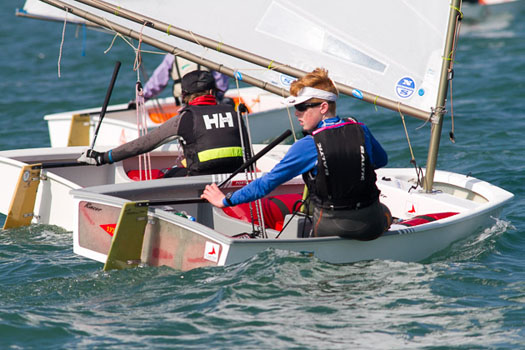

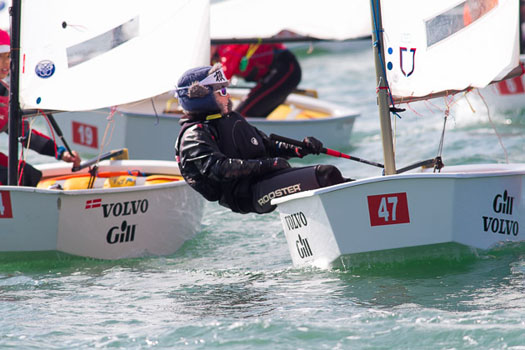

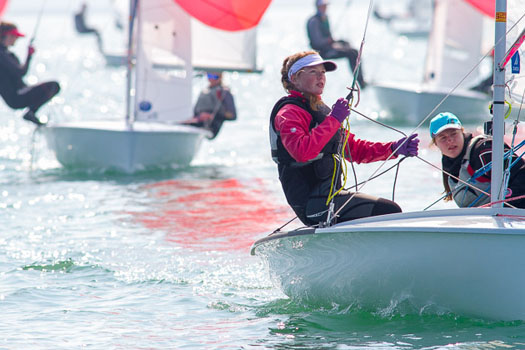
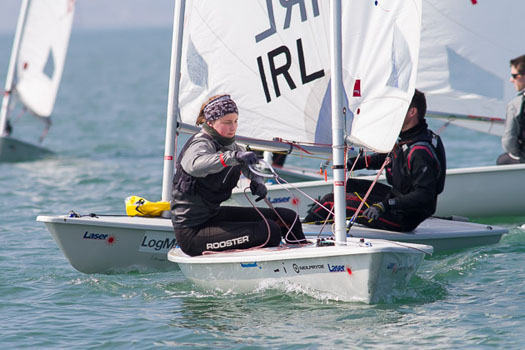
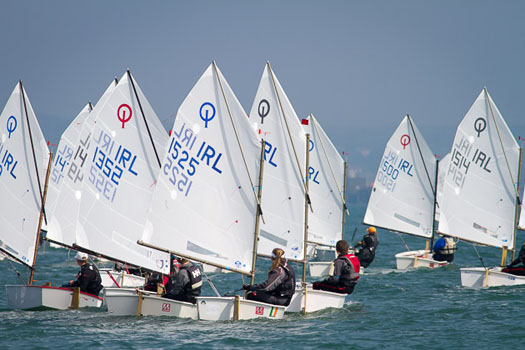
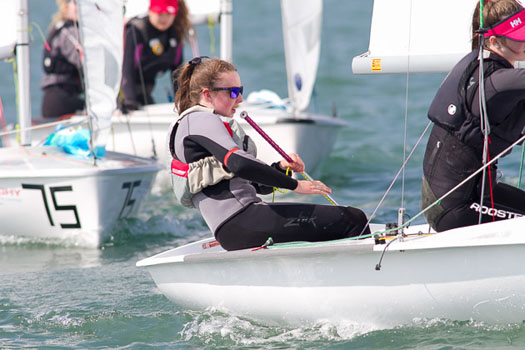

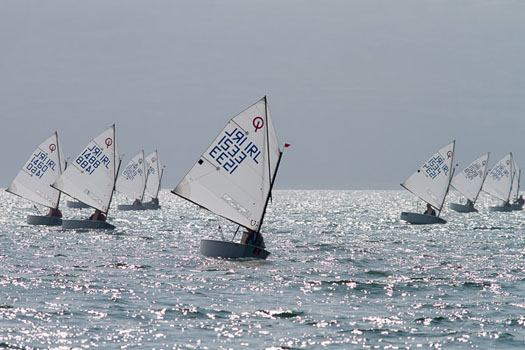
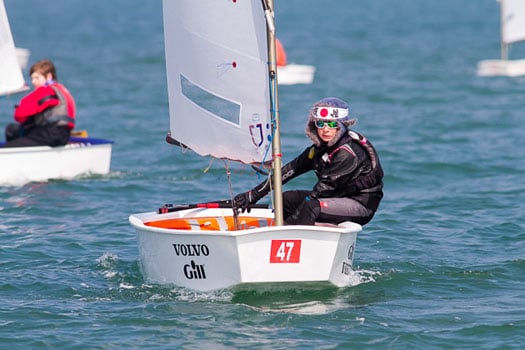
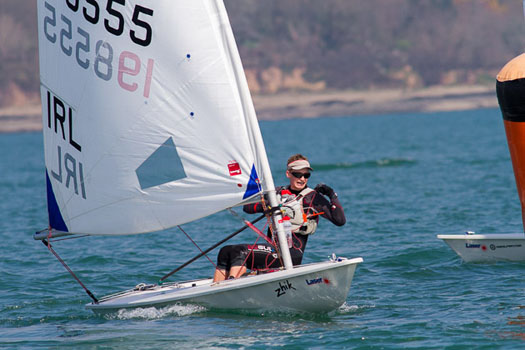
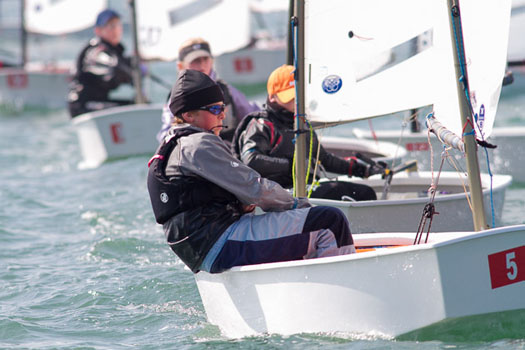
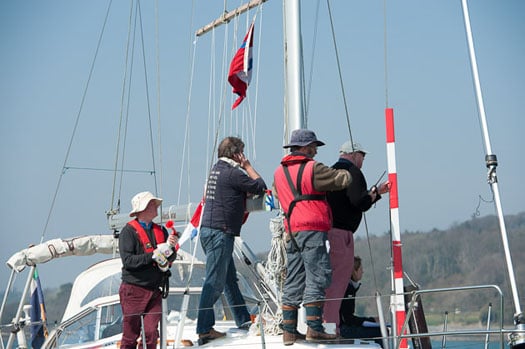


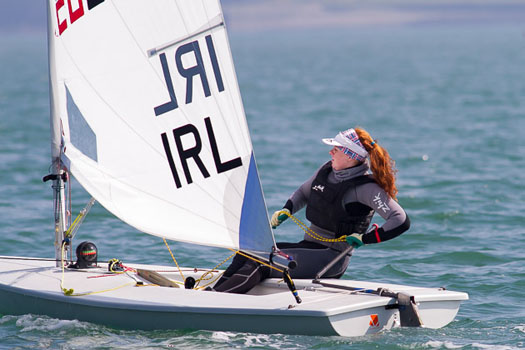
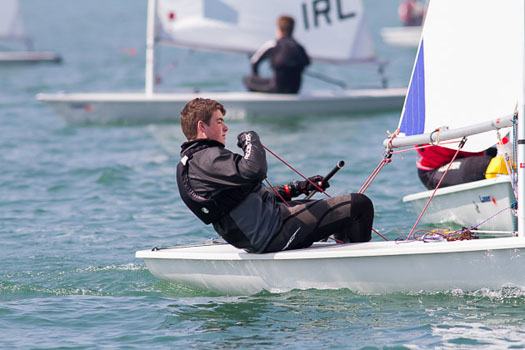
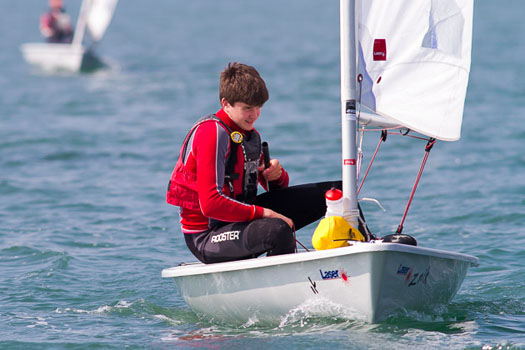
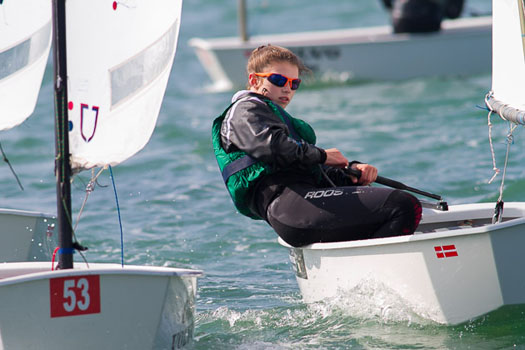
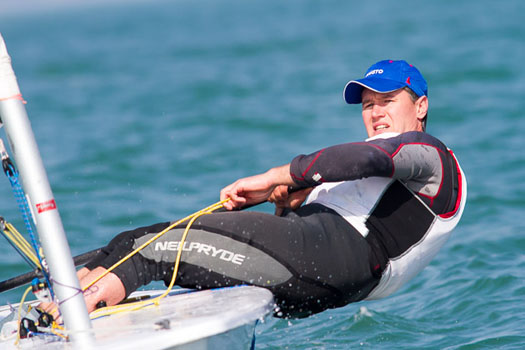
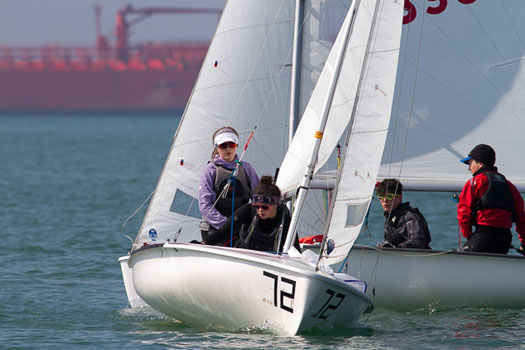
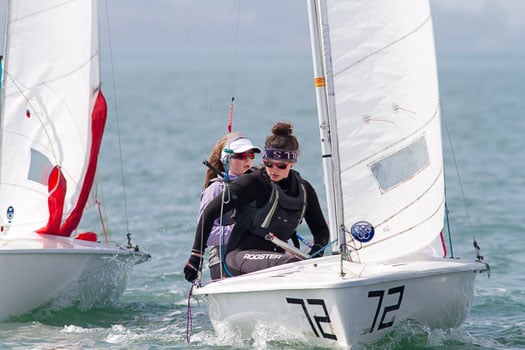
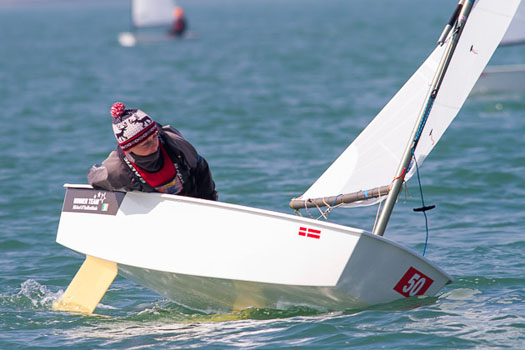

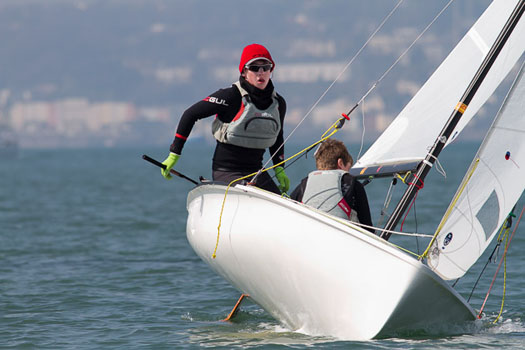

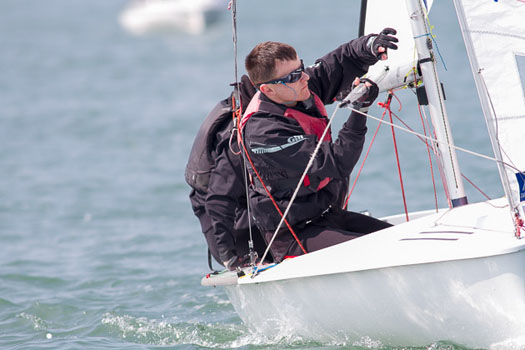
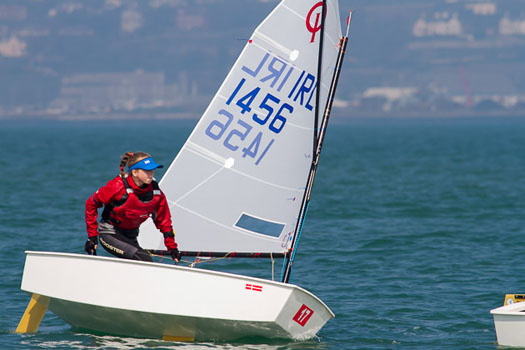
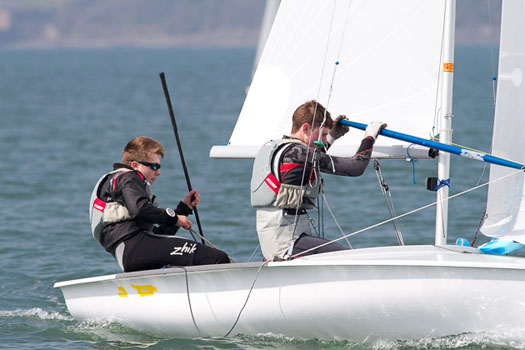



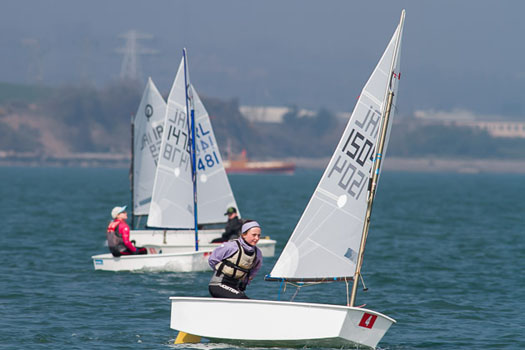
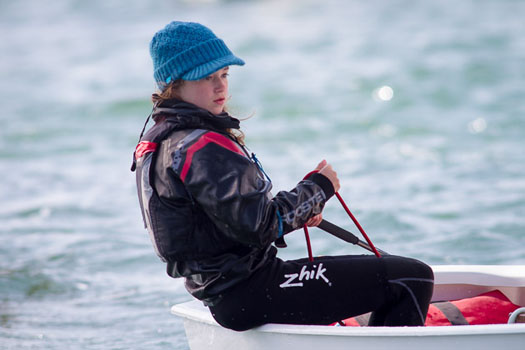
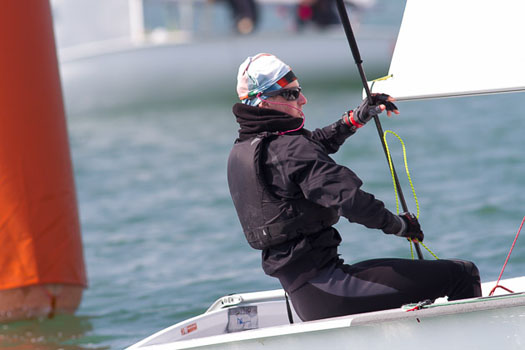
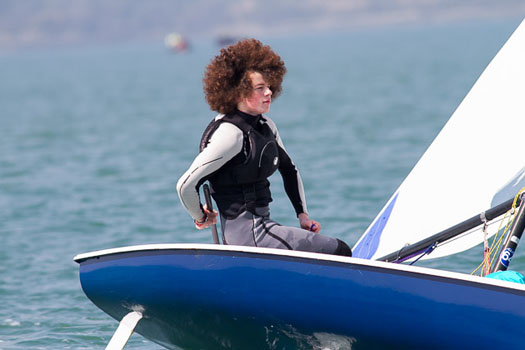
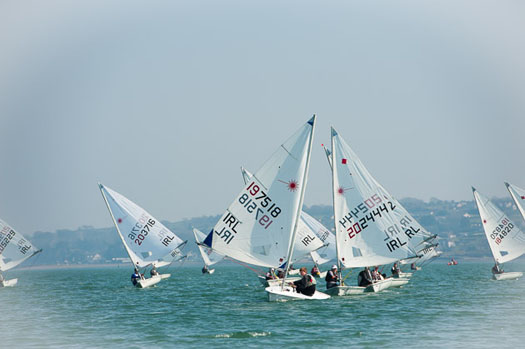

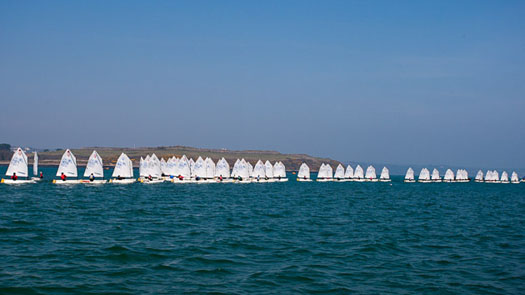
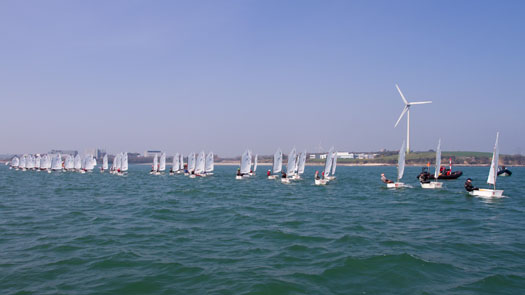
#sailingplan– Changes have been made to the Irish Sailing Association (ISA) Strategic Plan 2015 – 2020 that is to be proposed for adoption at the 2015 AGM in a fortnight. The revision includes the edits made to the original draft to reflect the input from the briefing meetings in Dublin, Cork and Galway. The latest version (downloadable below as PDF file) also takes onboard some of the observations contained in Afloat's original review of the document in January.
The main changes are:
• The inclusion of an additional pillar titled 'Representation'. This has been done to reflect the importance of this function for ISA members, who look to the Association to make sure that their concerns and aspirations for Sailing are effectively conveyed to decision makers of all types, whether they be at central or local government level, involved in regulation or in a position to support Sailing and increase the level of participation in Ireland.
• The use of the term 'Sailing' in place of 'sport' or 'sport of sailing' in all strategies except those specifically to do with competition. It was pointed out by a number of people that 'sport' implies competition and only covers a limited section of the range of activities that make up 'Sailing'. The remit of the ISA extends to all of the activities that 'Sailing' encompasses and that term has been adopted as being more appropriate.
Apart from the changes flowing from the addition of the 'Representation' pillar, various minor edits have been made throughout the document to correct errors in the consultation draft and state the strategies more clearly. However, none fundamentally changes the direction previously outlined for the Association between now and 2020, as set out in The Way Forward document, and the thrust of the new focus for the Association in providing a better and more relevant service to our clubs and members.
The minor changes include a redesign of the 'Overview' pages (04 and 05) to more clearly express the content, the inclusion of specific reference in the 'High Performance' pillar to Paralympic involvement (previously included in the global 'Olympic' term) and an expansion of the strategies listed for the 'Efficient Management' and 'Communication and Sponsorship' areas.



























